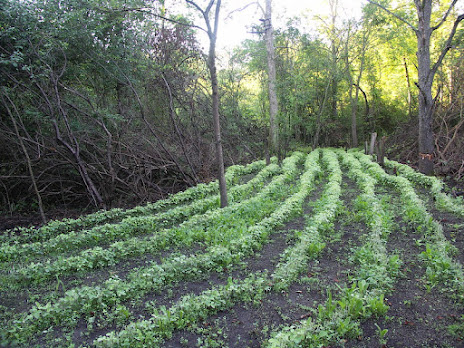Successful Food Plots: Keep Deer On Your Property All Season | Chilcoteforester
For wildlife
enthusiasts and hunters, a food plot is a necessity. The size of a field can be
as small as a garden or as large as an acre. These areas, planted in the spring
or fall, are full of grasses and seeds like forage oats, clover, rape, and
chicory, which attract wild game like turkey and deer.
The truth is that anyone
can quickly and inexpensively create valuable food plots for deer and other
wildlife. To obtain excellent outcomes, however, they should be done well.
While the process of setting up a food plot is not particularly difficult, there are a few steps you can take to ensure its success:
The most significant thing is to choose a location ideal for growing plants and your particular hunting setup, such as a stand or blind. Choose a relatively flat area because sloped areas can make it difficult to use equipment and cause soil erosion. Your plot's traffic can be increased by planting near thick cover or where deer are known to sleep.
Test Your Soil
Before Planting
Seeds, You May Need to Add Lime and Fertilizer to Your Soil. This will help the
plant get the most nutrients. In order to bring the pH level of acidic soil
back into a more balanced state, lime may be required. The best way to find out
this is to test the PH level of a sample of the soil at your chosen location.
Determine What You
Will Plant
If you intend to use the plot year after year, you might want to plant perennial seed varieties. Plant annuals if you plan to move your food plots year after year. Find out which kinds of plants will do best in your area's growing zone. In order to provide the deer with a greater overall variety and increase their attraction, consider the kinds of forage already present in the area and try to plant that one rarely.
Prepare the Plot
Trim tall grasses or
thick weeds by mowing them and then remove what was cut down. The next step is
to manually remove the top layer of sod using a shovel or a garden plow to turn
the ground upside down.
Apply Lime and
Fertilizer
Apply sufficient lime
to the newly turned ground to achieve the desired PH level. Remember that the
tremendous increase in alkalinity may require a significant amount of lime.
Additionally, apply the fertilizer to the area in accordance with the
recommendations for the volume to be spread per square foot. Before breaking up
the turned-over ground, you might want to let the lime and fertilizer weather
for a few days.
Break Up the Soil
To help ensure a high
rate of seed germination, break up the soil as finely as possible, and remove
any remaining exposed sod or rocks. On smaller plots, use a rototiller to break
up the turned-over soil and incorporate the lime and fertilizer mixture. A
garden disc can further break up the ground on larger plots.
Sow the Seed
On smaller plots,
seeds can be sown manually; on larger ones, you may want to purchase a spreading
seed attachment for your ATV or tractor. Apply seed in a volume that complies
with the seed manufacturer's or county agricultural board's recommendations.
Maintain the Area
After planting, the
plot must be appropriately maintained to reach the desired maturity level. At
least until your plants are large and thick enough to overpower and prevent
continued weed growth, keep an eye out for returning weed growth and remove any
new weeds that arise. You might need to water the area if it gets too dry.
Observe Deer Activity and Hunt Your Plot
Watching deer activity shows you where and how to hunt your plot. If you set up a game camera in the area, you can see when, how often, and where the deer are coming from. You can use this information to choose the best time of day to hunt the location and where to set up a blind or stand.
Final Thoughts
If you follow this step-by-step guide, you
should be well on your way to growing food
plots that will help the deer and other wildlife on the land you own or
manage and make your hunting better.
During the late spring and summer, a small investment of time and money in the construction of food plots can increase deer activity on your property and significantly increase your chances of achieving your harvest goals in the fall.




Comments
Post a Comment